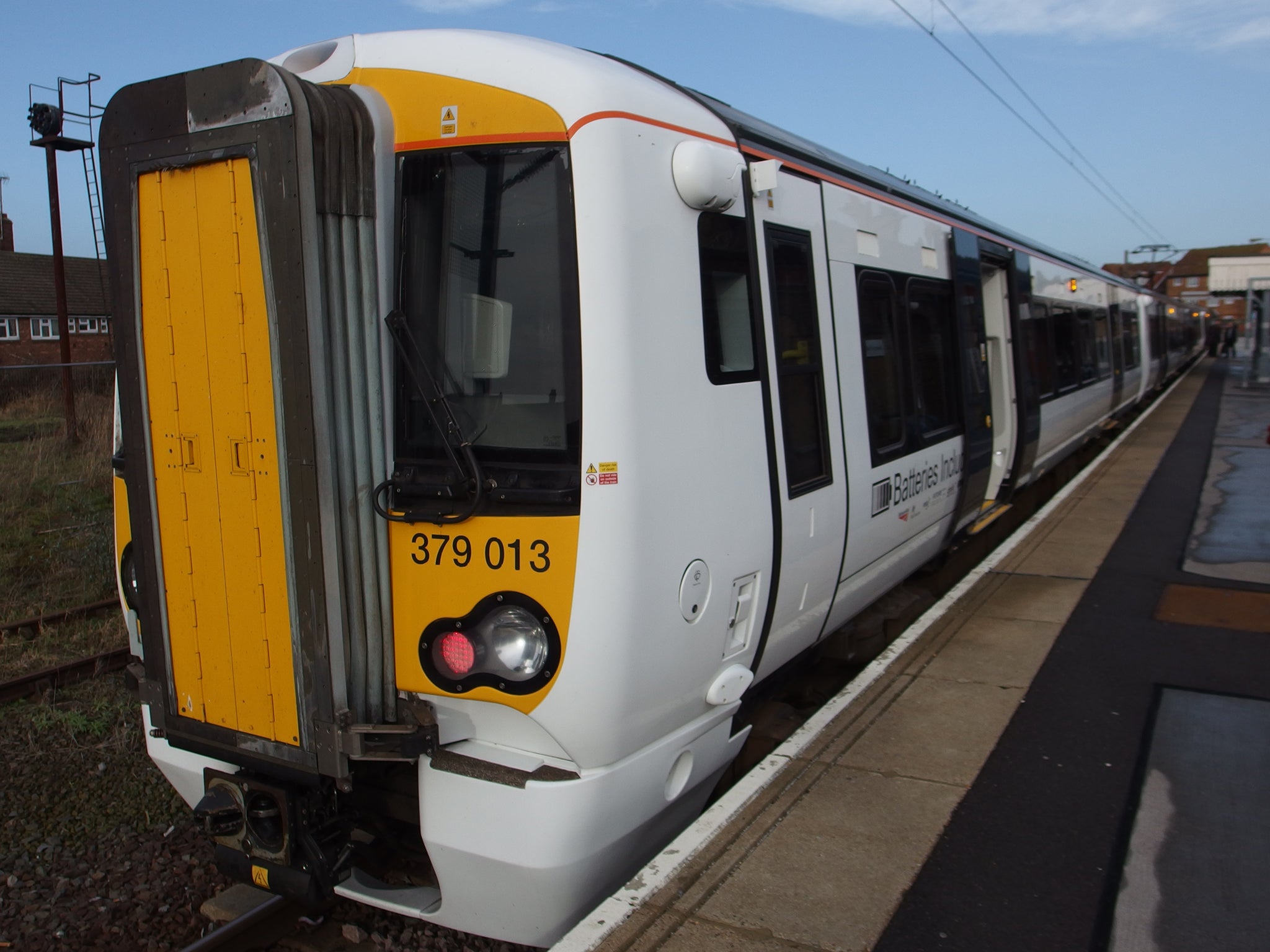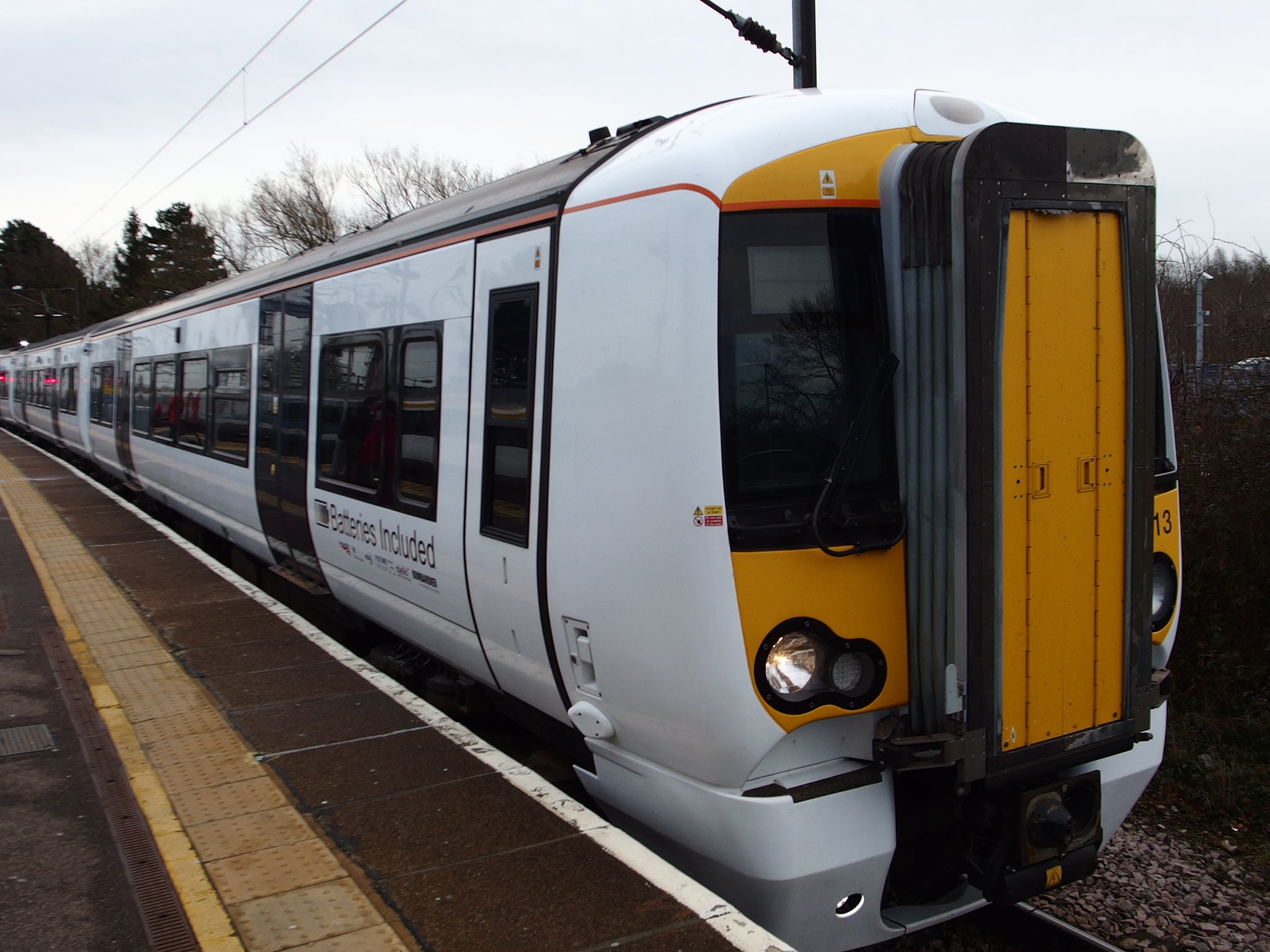'Batteries included': East Anglia leading a railway revolution with self-charging train
The battery-powered train is part of National Rail's plan to cut emissions

Your support helps us to tell the story
From reproductive rights to climate change to Big Tech, The Independent is on the ground when the story is developing. Whether it's investigating the financials of Elon Musk's pro-Trump PAC or producing our latest documentary, 'The A Word', which shines a light on the American women fighting for reproductive rights, we know how important it is to parse out the facts from the messaging.
At such a critical moment in US history, we need reporters on the ground. Your donation allows us to keep sending journalists to speak to both sides of the story.
The Independent is trusted by Americans across the entire political spectrum. And unlike many other quality news outlets, we choose not to lock Americans out of our reporting and analysis with paywalls. We believe quality journalism should be available to everyone, paid for by those who can afford it.
Your support makes all the difference.The future of branch-line Britain could rest on what happens in the next few weeks on a 10-mile stretch of track in north-east Essex – because the electric train now standing at Platform 1 is designed to run on batteries as well as mains. The once-an-hour shuttle along the “Mayflower Line” from Manningtree to Harwich has gone all AC/DC.
East Anglia used to be described as “Cut off on three sides by the sea, and on the fourth by British Rail.” But starting this week, the region is at the forefront of a railway revolution.
An Electrostar train has been brought in, complete with free wi-fi and on-board 13-amp sockets. But the recharging goes beyond facilities for laptops and mobile phones: the train itself has batteries that can draw power from the overhead lines, and then run on stretches without hard-wired electricity.
“Batteries included,” runs the slogan on the train. But this is no supercharged milk float.“It’s a better train than we normally get, said one member of railway staff about the 11:03 on Platform 1 at Manningtree. “Make the most of it.”
The carriages are Stansted Express stock, providing extra comfort for appreciating the ride beside the wildlife-rich Stour Estuary. Only an expert eye will note that that the middle carriage has lithium batteries slung beneath it. They are said to have a power equivalent to 80,000 D-type cells, of the type used in torches.

“Is this the only train with batteries?,” said Wayne Sams, a commuter from Dovercourt, when informed by The Independent that he was riding on an experimental test-bed. “I feel privileged now. There’s less wobbling and jolting.”
Jonathan Anderson, a rail enthusiast, had come south from Sheringham in Norfolk to ride on the new “Independently Powered Electric Multiple Unit”. His verdict: “It’s smooth and efficient, and when there’s a problem with the wires it’ll carry on.”
Battery-powered trains are nothing new in the UK. Locomotives powered by batteries were used in munitions factories during the First World War to reduce the risk of explosion from sparks emitted by steam traction. The London Underground has a fleet of battery locomotives used on engineering trains when the power is switched off.
The battery train forms part of Network Rail’s plan to reduce emissions, cut costs and improving the quality of the journey. The organisation’s principal engineer, James Ambrose, said: “Most travellers will recognise how quiet and smooth the ride is compared to a diesel-powered train. We are always looking for ways to reduce the cost of running the railway and make it greener too. This project has the potential to contribute significantly towards both those goals.”

The experimental service is taking no chances: it is separate from the London-Norwich main line, and the whole stretch of track has overhead power. On the day The Independent took the train, a fault with the battery system meant that the pantograph was used to collect power from the line for the whole journey. But if the trial is successful, the idea is for battery-powered trains to bridge gaps between electrified parts of the network and to run on branch lines where it would be too expensive to install overhead power.
Key candidates include Shrewsbury, Chester and Blackpool, which are off the electrified West Coast Main Line and are currently served from London by diesel trains.
Yet recent journeys on East Coast Trains show that freewheeling is another option when overhead power is not available. The operator on the East Coast main line has revealed its electric trains do just that – coast –when the power supply fails on a short stretch of track. Last month, some passenger trains ran at over 100mph without power after the electricity supply was interrupted south of Doncaster.
Join our commenting forum
Join thought-provoking conversations, follow other Independent readers and see their replies
Comments